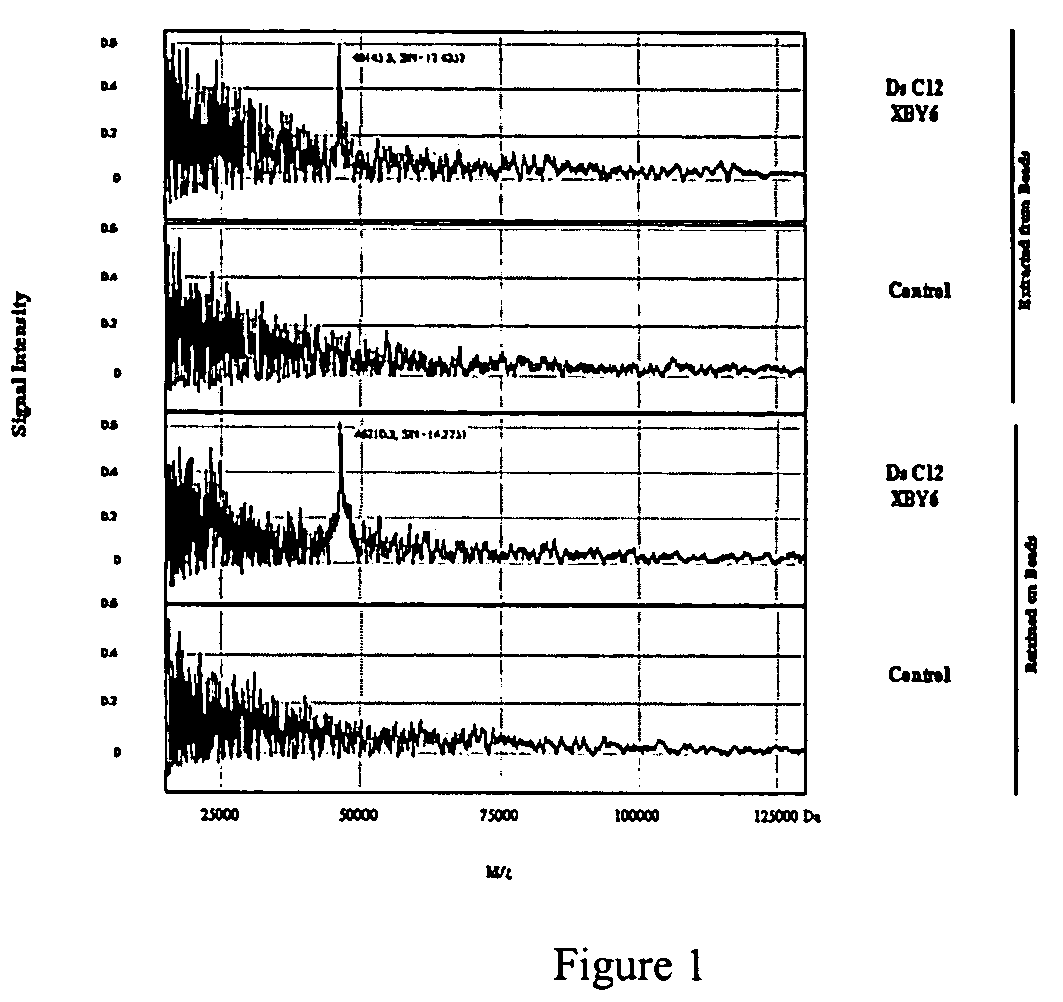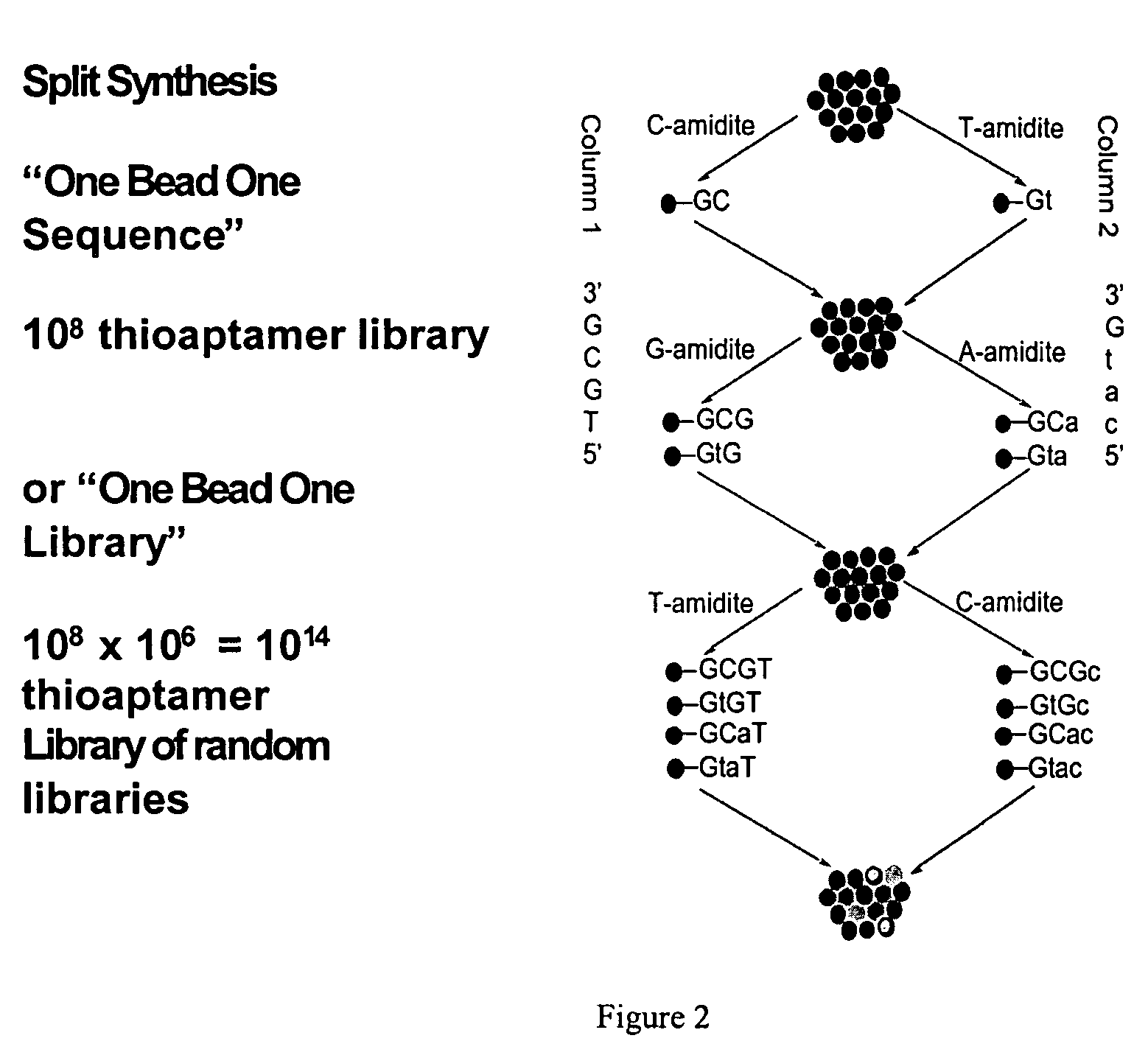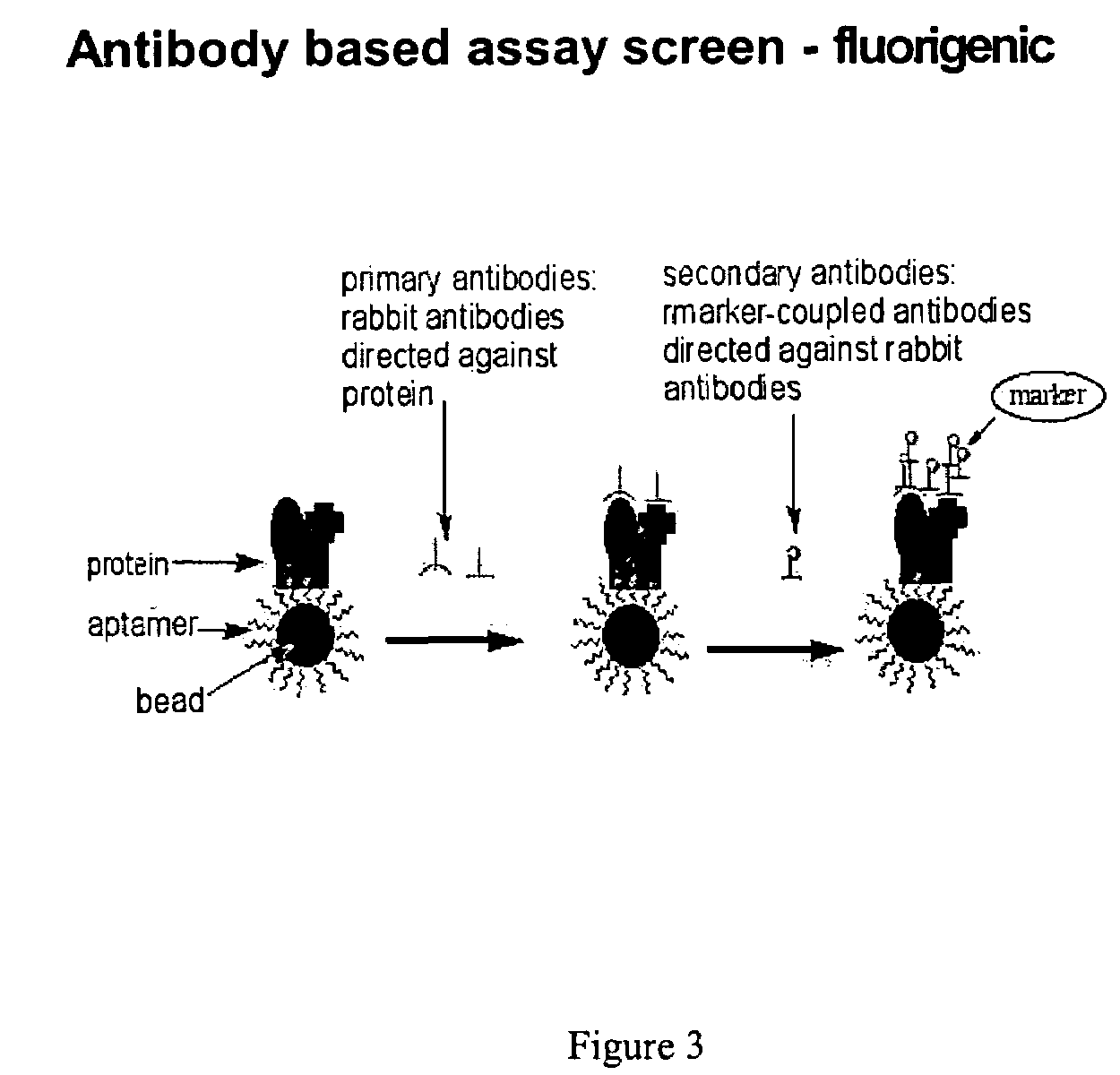Bead bound combinatorial oligonucleoside phosphorothioate and phosphorodithioate aptamer libraries
a technology of phosphorothioate and aptamer libraries, which is applied in the field of aptamer libraries, can solve the problems of odns possessing high fractions of phosphorothioate or phosphorodithioate linkages losing some of their specificity, and limited to substrates
- Summary
- Abstract
- Description
- Claims
- Application Information
AI Technical Summary
Benefits of technology
Problems solved by technology
Method used
Image
Examples
example 1
S—ODN, S2—ODN and Monothio-RNA Split and Pool Synthesis
[0073]A split and pool synthesis combinatorial chemistry method was developed for creating combinatorial S—ODN, S2—ODN and monothio-RNA libraries (and readily extended to unmodified ODNs-whether single strand or duplex). In this procedure each unique member of the combinatorial library was attached to a separate support bead. Targets that bind tightly to only a few of the potentially millions of different support beads can be selected by binding the targets to the beads and then identifying which beads have bound target by staining and imaging techniques. The methodology of the present invention allowed the rapid screening and identification of aptamers that bind to proteins such as NF-κB using a novel PCR-based identification tag of the selected bead.
[0074]The dA, dG, dC and dT phosphoramidites were purchased from Applied Biosystems (Palo Alto, Calif.) or Glen Research (Sterling, Va.). The Beaucage reagent (3H-1,2-Benzodithiol-...
example ii
ELISA Based Thioaptamer Selection-Indirect ELDIA
[0110]Although the beads were screened against a target protein labeled with a fluorescent dye, the beads can also been screened directly against the transcription factor. The binding of the NF-κB to a specific sequence can be detected using a primary anti-NF-κB antibody (Rabbit IgG antibody, Santa Cruz Biotechnology, Inc.) followed by a secondary antibody conjugated with Alexa Fluor 488 (goat anti-rabbit IgG from Molecular Probes). Next, several beads were selected for sequencing. The sequencing result were as follows:
[0111]
E008 Selected sequences5′-CGCCAGCCGaAGGTGCTGTCAG-3′(SEQ ID NO:31)5′-ATGTAGCCAaAGGTGgaACCCC-3′(SEQ ID NO:32)5′-CGCCcAGTgaAGGTGCTGTCAG-3′(SEQ ID NO:33)5′-CGCCcAGTAGCTAGTCTGTCAG-3′(SEQ ID NO:34)
[0112]It was observed that the phosphorodithioate linkage (s) in the selected above sequences were different from those of the screening against the fluorescently labeled NF-κB p50. This result suggests that some of the binding...
example iii
Labeling of the ODN with Fluorescent Dyes
[0113]When synthesizing combinatorial libraries or specific thioaptamer sequences on beads, one may also identify beads by attaching 2 or more fluorescent dyes to the ODN either at the 5′ or 3′ ends or internally by using phosphoramidites with specific fluorophors attached. By using 1-3 (or more) fluorophors at 2-3 or more different levels (individual nucleosides), it is possible to identify dozens or more of the sequences or libraries by multicolor flow cytometry. (Each bead can thus be identified by dye A, B and / or C at levels high, medium, low in various combinations: thus bead with A(hi), B(medium) and C(low) would be one of dozens of different possible combinations.)
[0114]Thus it is possible to multiplex using flow cytometry or by randomly placing beads onto, e.g., the Texas tongue with hundreds or thousands or more of different microwell holders, random assortment of thioaptamer beads specific for binding different analytes. Alternative...
PUM
| Property | Measurement | Unit |
|---|---|---|
| diameter | aaaaa | aaaaa |
| diameter | aaaaa | aaaaa |
| diameter | aaaaa | aaaaa |
Abstract
Description
Claims
Application Information
 Login to View More
Login to View More - R&D
- Intellectual Property
- Life Sciences
- Materials
- Tech Scout
- Unparalleled Data Quality
- Higher Quality Content
- 60% Fewer Hallucinations
Browse by: Latest US Patents, China's latest patents, Technical Efficacy Thesaurus, Application Domain, Technology Topic, Popular Technical Reports.
© 2025 PatSnap. All rights reserved.Legal|Privacy policy|Modern Slavery Act Transparency Statement|Sitemap|About US| Contact US: help@patsnap.com



